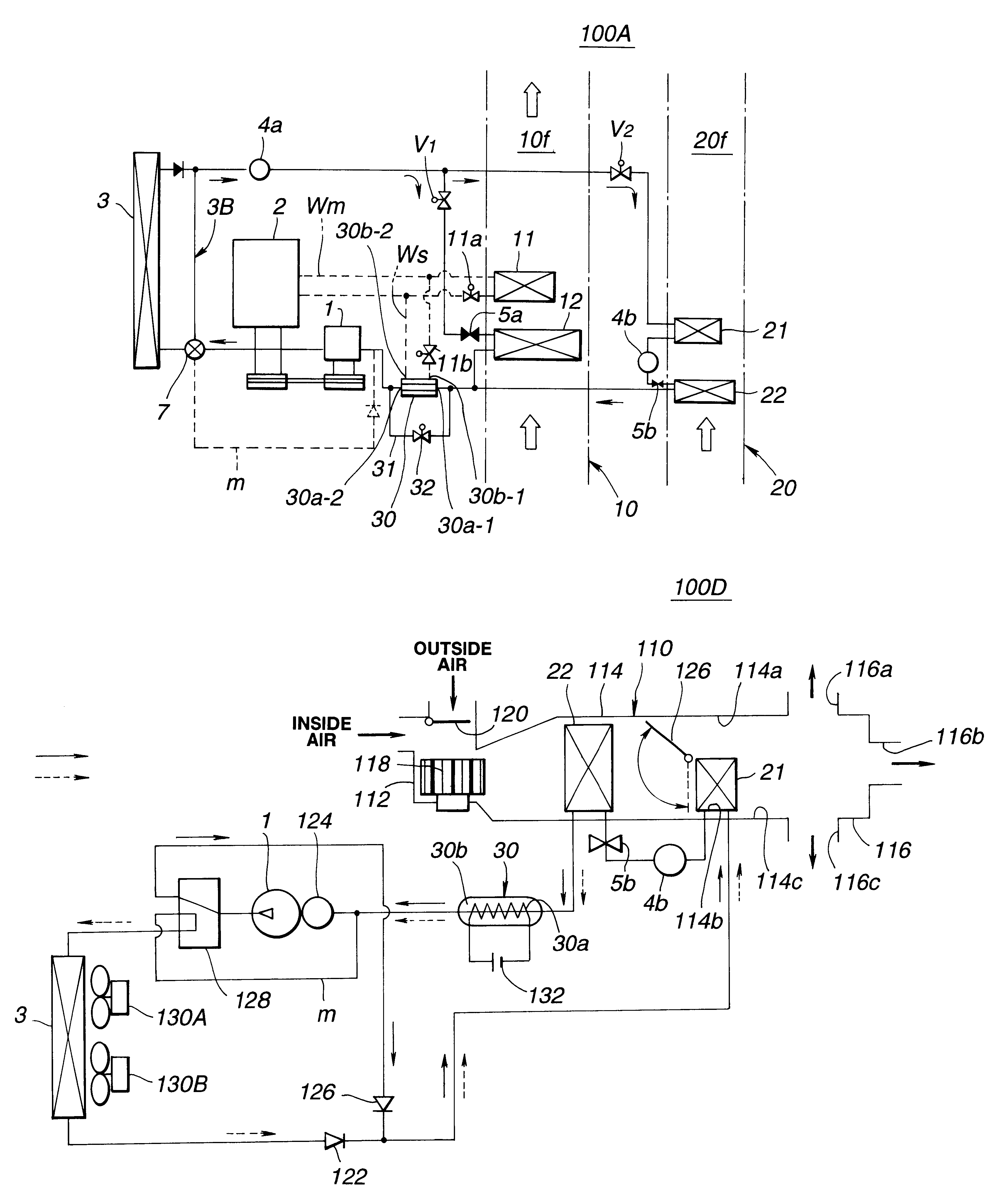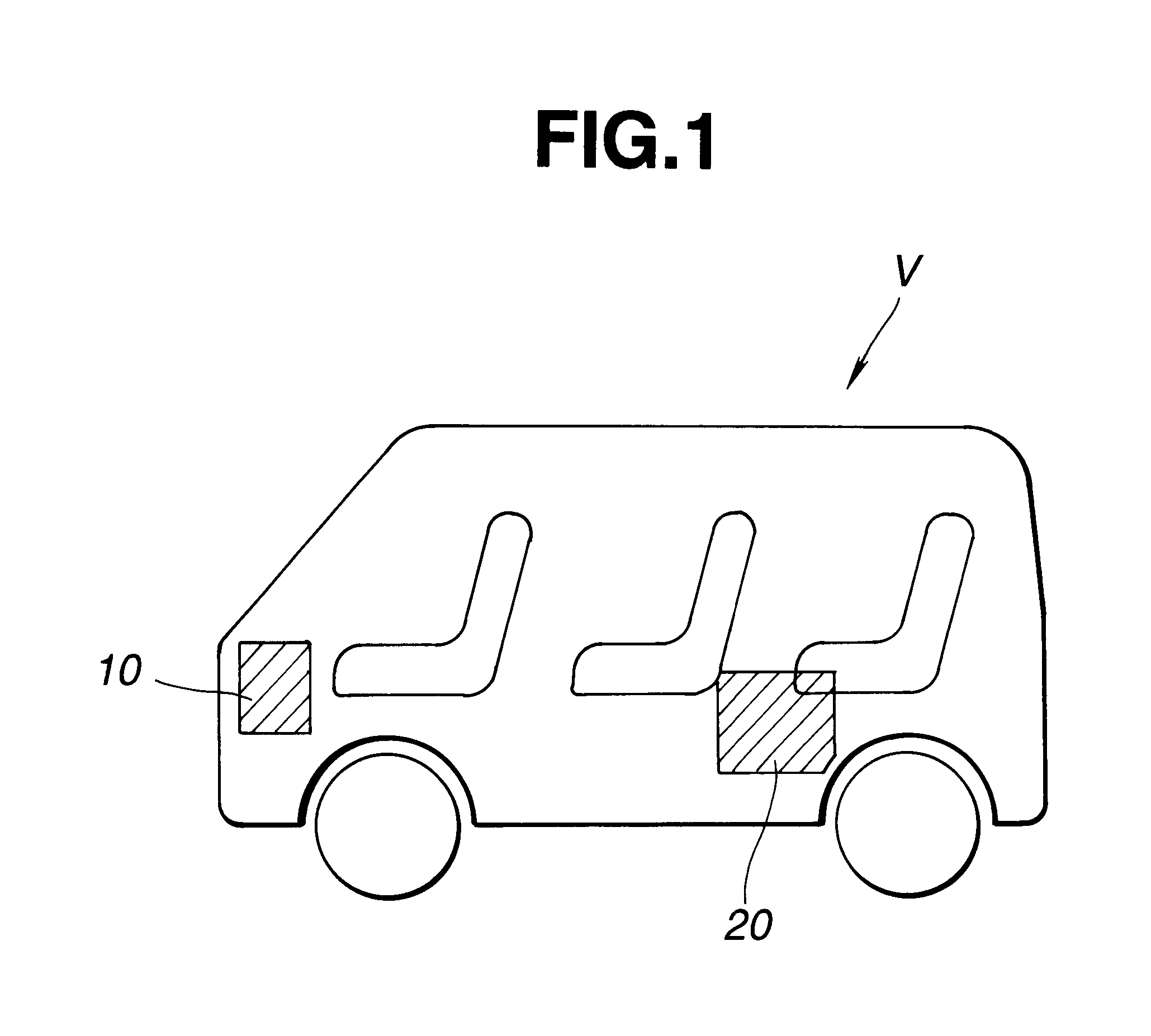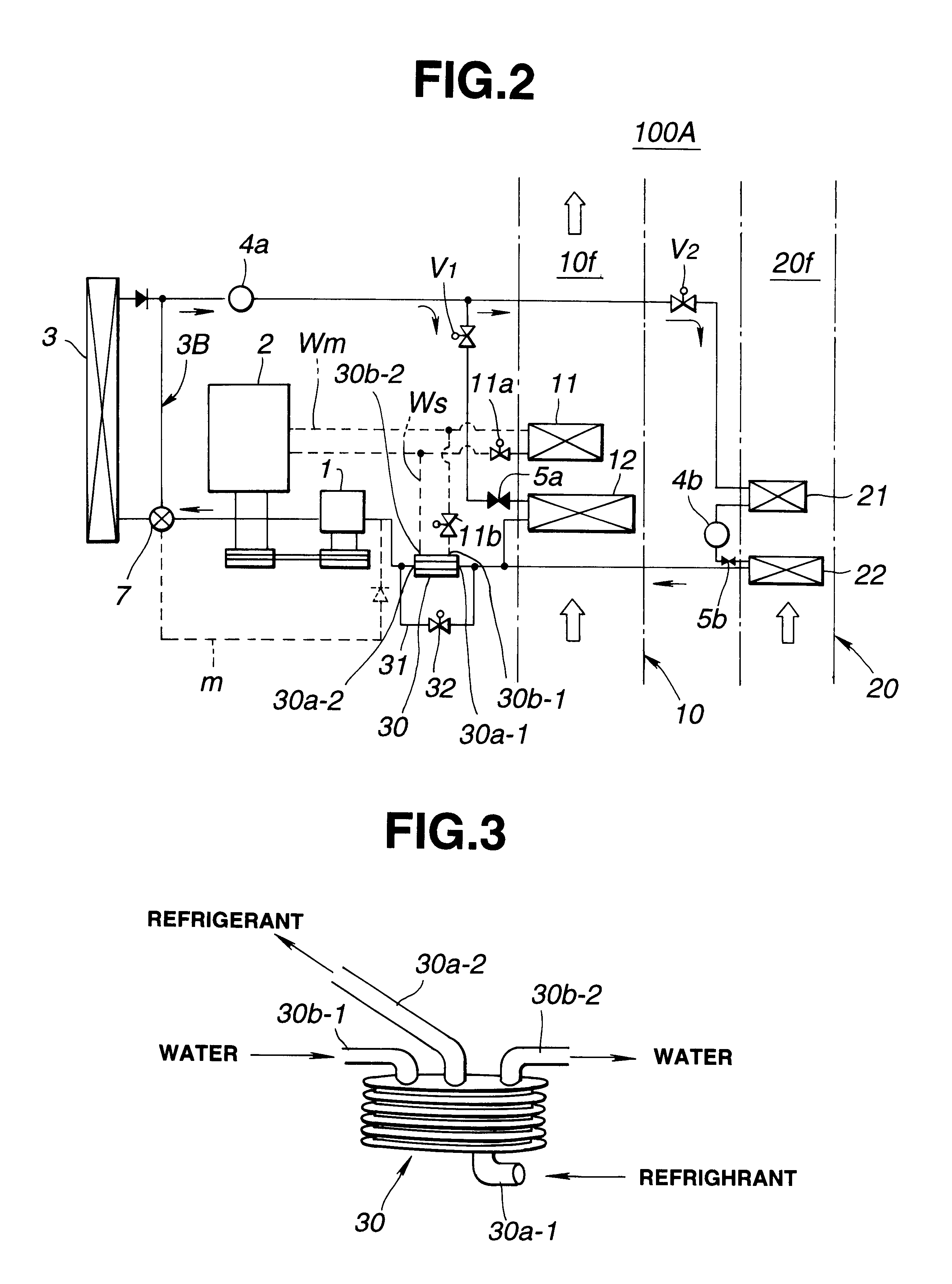Automotive air conditioning system
a technology for air conditioning systems and automobiles, which is applied in the field of air conditioning systems, can solve the problems that the air conditioning systems of the above-mentioned dual type have failed to give users satisfaction, and the second air conditioning unit of the system has failed to provide the rear part of the passenger room with a satisfactorily warm air
- Summary
- Abstract
- Description
- Claims
- Application Information
AI Technical Summary
Benefits of technology
Problems solved by technology
Method used
Image
Examples
first embodiment
Referring to FIGS. 1 to 3, there is shown an automotive dual air conditioning system of the present invention, which is generally designated by numeral 100A.
As is seen from FIG. 1, the dual air conditioning system 100A generally comprises a first air conditioning unit 10 mounted on a relatively front portion of a vehicle "V", a second air conditioning unit 20 mounted on a relatively rear portion of the vehicle "V" and interconnecting means which operatively connects is the first and second systems 10 and 20 in such a manner as will be described hereinafter. As is understood from the drawing, the first and second air conditioning units 10 and 20 are arranged and constructed to condition air blown into relatively front and rear portions of a passenger room, respectively. That is, the first unit 10 selectively takes outside air (viz., air outside the vehicle) and / or inside air (viz., air in the passenger room) and conditions the air before discharging the same to the front portion of t...
second embodiment
Referring to FIG. 4, there is shown an automotive dual air conditioning system 100B which is the present invention.
Since the system 100B of this second embodiment is similar to the above-mentioned system 100A of the first embodiment, only portions and parts which are different from those of the first embodiment will be described in detail in the following. Substantially same portions and parts as those of the first embodiment 100A are denoted by the same numerals.
As is seen from FIG. 4, in this second embodiment 100B, there are no means which correspond to the bypass circuit 31 and the valve 32 which are used in the first embodiment 100A. Furthermore, the extra heat exchanger 30 is arranged in a refrigerant line just downstream of the second heat exchanger 22. As shown, a refrigerant line from the output of the extra heat exchanger 30 to connected to a refrigerant line which extends from an output of the first heat exchanger 12 to the compressor 1.
As is well shown in FIG. 4, in this...
third embodiment
Referring to FIG. 6, there is shown an automotive dual air conditioning system 100C which is the present invention.
Since the system 100C of this third embodiment is similar to the above-mentioned system 100B of the second embodiment, only portions and parts which are different from those of the second embodiment will be described in detail in the following. Substantially same portions and parts as those of the second embodiment 100B are denoted by the same numerals.
As is seen from FIG. 6, in this third embodiment 100C, there is no means corresponding to the second heat exchanger 22 used in the second embodiment 100B. That is, the outlet of the second condenser 21 is connected to the inlet line 30a-1 of the extra heat exchanger 30 through the liquid tank 4b and the second expansion valve 5b. Further, there is no means corresponding to the added measure (including the temperature sensor 40 by which the second expansion valve 5b is controlled) employed in the second embodiment 100B.
Fur...
PUM
 Login to View More
Login to View More Abstract
Description
Claims
Application Information
 Login to View More
Login to View More - R&D
- Intellectual Property
- Life Sciences
- Materials
- Tech Scout
- Unparalleled Data Quality
- Higher Quality Content
- 60% Fewer Hallucinations
Browse by: Latest US Patents, China's latest patents, Technical Efficacy Thesaurus, Application Domain, Technology Topic, Popular Technical Reports.
© 2025 PatSnap. All rights reserved.Legal|Privacy policy|Modern Slavery Act Transparency Statement|Sitemap|About US| Contact US: help@patsnap.com



